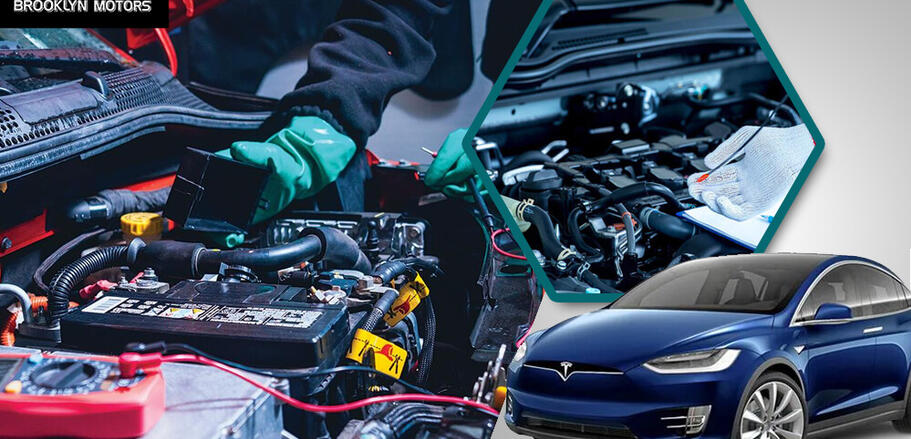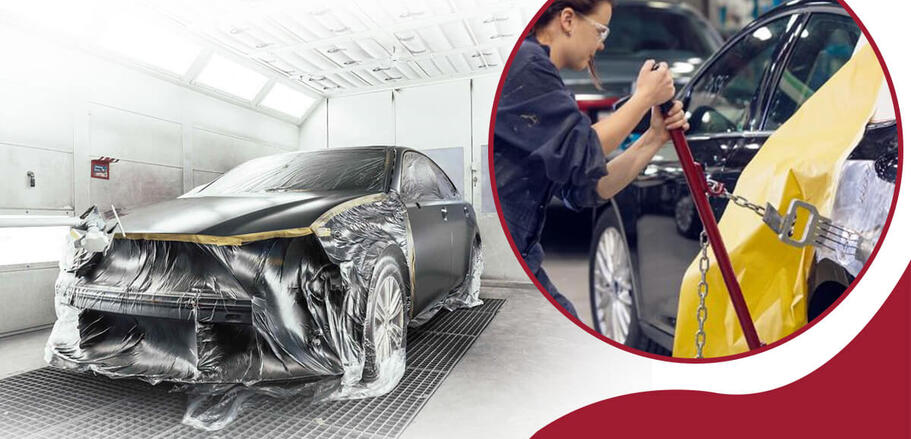
 April 19, 2024
April 19, 2024For people who own electric cars, experiencing a collision from the rear is pretty worrisome. This happens because in an electric vehicle, the boot also contains important parts like a battery pack and other electrical pieces. A damaged rear portion of a car needs special attention to make sure it is fixed correctly and works safely. Let's see the method that an EV auto body near me uses to mend the trunk section of an electric vehicle following an accident.
Initial diagnostic scans
Initially, technicians must conduct diagnostic examinations to evaluate the possible harm to the car's electrical structure and battery parts. Although the impact on the back side appears small, it is important to inspect for any problems that might not be immediately noticeable. Technicians who have training in electric vehicles will use special tools to check for problems and see if something has been affected.
Safely removing the battery pack
When technicians find damage near where the battery pack is installed, it must be taken out with caution as the maker instructs. Technicians should wear suitable safety gear and be very careful when dealing with lithium-ion batteries to prevent electric dangers. The battery gets disconnected and stored in a temperature-controlled location throughout the repair process.
Repairing or replacing components
Once the battery pack is removed, the technicians can fix or change any other broken electrical and structural parts in the area of the trunk. This might include repairing wires, brackets for mounting, and parts that absorb energy. For severe impacts, the entire rear chassis may need to be partially replaced.
Reinstalling the battery pack
After repairing or changing the parts needed for starting, technicians can put back the battery pack exactly as the electric vehicle maker says. Technicians must make sure all the electric harnesses are tightly fixed. Once the reinstallation is done, technicians will scan the system again to make sure all is working properly with the battery put back.
Post-repair testing and calibration
Before giving the electric vehicle back to its owner, mechanics must do thorough driving tests and adjust the battery control system if necessary. They will look for error messages and make certain that after fixing it, the battery performs at its best level. Final quality inspections confirm everything is fully restored and road-ready.
Although it may appear intimidating to have the battery pack removed due to a collision at the back, reliable electric vehicle repair experts adhere carefully to established procedures for restoring your car's optimal performance securely. Their careful approach to the EV car repair near me ensures you can drive once more feeling reassured and confident.

 February 25, 2024
February 25, 2024Primers and surfacers are essential pre-paint products used in EV auto body repair. Primers provide an improved surface for paint adhesion and prevent future corrosion. Epoxy primers offer excellent adhesion and durability on plastic and composite surfaces.
Surfacers, or body fillers, even out minor imperfections and damage on the exterior body. Polyester or lightweight fillers are ideal for EV repair. High-build primers and surfacers make the body surface smooth and paint-ready.
Basecoats
Basecoat paint provides color and is applied after the primer. Basecoats for EVs are specially formulated for plastic and composite materials. Waterborne acrylic urethane basecoats offer vibrant color matching and metallic finishes with an eco-friendly formula.
Basecoats for EVs need maximum flexibility to prevent cracking on plastics. 2K acrylic and polyurethane basecoats provide brilliant gloss and durability. Multiple coats may be applied for full, even coverage. The color shade needs precise matching to OEM factory specifications. You can search with an EV auto body near me and find out the type of paint used by them.
Clear coats
Clear coat paint gives the finish its final glossy shine and protection. It is layered over the colored basecoat. A high-quality polyurethane or acrylic urethane clear coat provides scratch resistance and UV ray protection from sun exposure.
Some clear coats offer ceramic properties for added durability. Flexible clear coats are required to prevent cracking on plastic EV parts. Multiple clear coat layers may be applied for increased gloss and depth. Proper clear coat application results in a flawless, smooth, professional-level finish.
Specialty coatings
Some EVs use additional specialty coatings. Anti-chip coatings prevent minor gravel damage on vulnerable areas like fenders and hoods. Matte finishes have flatter, non-glossy clear coats. Vinyl wrap coatings allow bold printed graphics.
Paint protection film, or PPF, is a clear urethane applied to high-impact regions. Proper application of these specialty coatings protects the EV's appearance and value.
Following OEM procedures using the right primers, basecoats, clear coats, and specialty coatings allows EV auto body technicians to achieve a factory-perfect, long-lasting finish repair. With an EV specialized auto body near me, you can make your car shine like new again.
 2575 Stillwell Ave,
2575 Stillwell Ave, 






